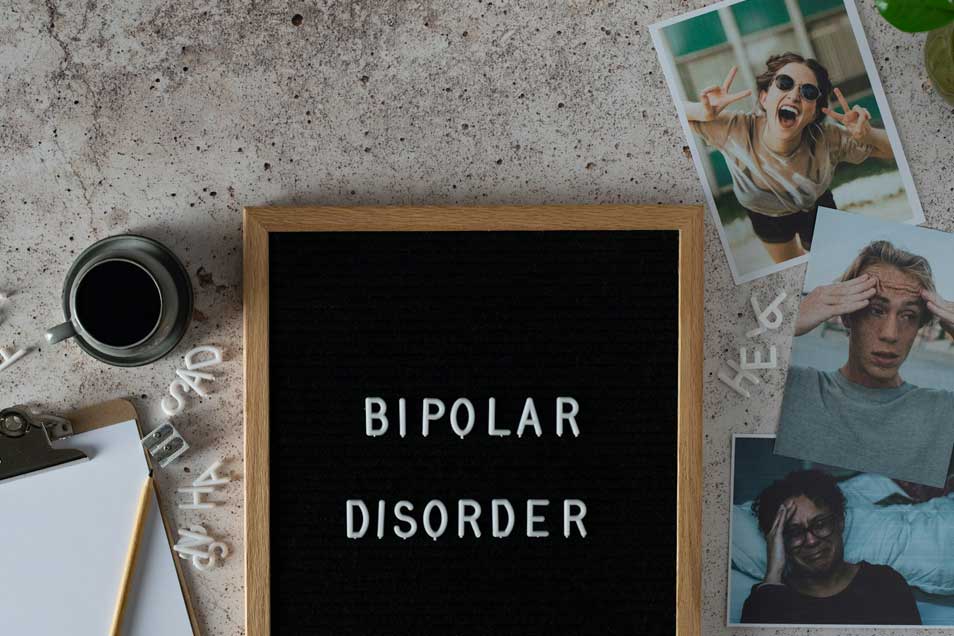The Signs and Symptoms of Bipolar Disorder
March 30 is World Bipolar Day (WBD), a day dedicated to combating the social stigma around bipolar disorder and bringing awareness to the world about the mental illness. The more we all know about mental illnesses like bipolar disorder, the better chance individuals in need have at receiving the mental health care they need.
That is why, this World Bipolar Day, we would like to spread the knowledge about this mental disorder, covering the signs, symptoms, and treatments needed for those with the mental health disorder.
What is Bipolar Disorder?
Bipolar disorder is a complex mental health disorder that defines an array of mood disorders, which are referred to as:
- Bipolar I Disorder: This category of bipolar disorder defines individuals experiencing manic episodes that last a minimum of seven days. It can also define individuals who are experiencing manic symptoms that are severe enough to require hospitalization. Those with Bipolar I Disorder can also experience depressive episodes that tend to last approximately two weeks.
- Bipolar II Disorder: This category of bipolar disorder defines individuals experiencing depressive episodes and hypomanic episodes, which are disruptive but less severe than full-on manic episodes.
- Cyclothymic Disorder: This category of bipolar disorder defines individuals experiencing consistent cycles of depression and hypomania for at least two years with no significant symptom-free periods.
What Are the Signs and Symptoms of Bipolar Disorder?
Bipolar disorder is defined by extreme mood swings, which can bring extreme highs, which are also known as mania, and extreme lows, which are also known as depression. These manic and depressive episodes can last for days or weeks and can seriously disrupt a person’s quality of life.
The Signs and Symptoms of Mania
Mania is characterized as an extreme high because a person experiencing it will display a high mood, extreme energy, and elevated risk-taking behaviors. Now, simply feeling energetic and happy is not a sign of mania. This high must be extreme enough to be noticeable by others and have an impact on a person’s quality of life in order to fall under the definition of mania.
A person experiencing a manic episode may exhibit signs and symptoms like:
- Experiencing an abnormally high level of energy and activity
- Feeling euphoric, extremely happy, or over-excited
- Elevated moods and irritability
- Talking faster and more than usual
- Not sleeping or cutting back on sleeping hours
- Racing thoughts
- Becoming obsessive about ideas, things, behaviors, and activities
- Developing overinflated confidence and grandiosity, sometimes leading to the belief that one is invincible
- Becoming easily distracted
- Becoming restless and unable to stand still
- Engaging in impulsive and oftentimes reckless behaviors, like speeding, shopping sprees, and reckless sex
- Delusions and hallucinations
The Signs and Symptoms of Depression
Depressive episodes are defined by a lack of energy, motivation, and happiness. A person experiencing a depressive episode will not feel quite like themselves and find that they are experiencing signs and symptoms like:
- Low mood
- Hopelessness, guilt, sadness, and irritability
- Low energy
- Mind fog, lack of concentration, and struggles with remembering things
- Loss of interest in the things that once brought you joy
- Lack of motivation for life
- Social isolation
- Feeling worthless, numb, or empty
- Pessimism
- Lack of self-confidence
- Delusions, hallucinations, or illogical thinking
- Changes in appetite
- Changes in sleeping patterns
- Suicidal thoughts, self-harm, or thoughts of death
Hypomanic Episodes
In Bipolar II Disorder, individuals will experience episodes known as hypomania. Hypomania is a condition that exhibits similar symptoms to mania. However, in hypomania, these symptoms are far less severe in severity.
When experiencing hypomania, one will exhibit heightened energy and activity levels, moods, and behaviors. To be defined as hypomania, these heightened levels must exhibit a change from one’s normal self that is noticeable to oneself and to those around them.
While hypomania can impact a person’s life, the difference between hypomanic episodes and manic episodes are:
- The length of time the symptoms last
- Mania is severe enough to impact work and school functioning, whereas hypomania is not
- Mania can, at times, require hospitalization
Risk Factors for Bipolar Disorder
Researchers are still in search for the exact cause of bipolar disorder. However, most are in agreement about one thing: it is likely that many things can contribute to a person’s risk factor for developing the mental health disorder, including:
The Brain’s Physiology and Function
A few studies have found that individuals with bipolar disorder exhibit physical differences in the brain than those without it. This includes the structure and functioning of the brain. Neuroscience is still a relatively new field, so the more researchers are able to explore these findings, the better we will be able to understand just how the physiology and function of the brain impacts the disorder.
Genetics
There have been a few studies that support the idea that a person’s genes can impact their probability of developing the mental health disorder. Research has found that individuals with a family history of bipolar disorder, such as a sibling or parent, are more likely to have the disorder.
Environment
Research has also supported the existence of environmental risk factors in relation to bipolar disorder. These environmental factors can include childhood adversity, prenatal events, social support systems, substance use, and traumatic life events. The research in this area of risk factors for bipolar disorder is minimal and in need of a deeper look. However, the existing minimal research supports the idea that a person’s environment, both prenatal and throughout their life, has an impact on their likelihood of developing bipolar disorder.
How is Bipolar Disorder Treated?
There are treatment options available for those experiencing bipolar disorder that have been shown to be effective in even the most severe cases of the illness. These treatment plans can often include a mix of both medication and psychotherapy.
Treating bipolar disorder will be a continuous responsibility, as the disorder lasts throughout one’s life. Manic and depressive episodes will come back. There will also be symptom-free breaks in between these episodes. However, with an effective long-term treatment plan, an individual with the disorder can manage the symptoms and live a quality life.
We Are Here for You
Experiencing bipolar disorder can feel scary and isolating. However, it is important to know that you do not have to go through this alone. Recognizing the signs and symptoms of the disorder is the first step to receiving the treatment you need.
If you believe that you may be living with bipolar disorder, we are here for you. Contact us today, and our compassionate and caring therapists will be here for you. With proper treatment and support, those experiencing the mental health disorder can still live fulfilling and productive lives.
References
https://www.ncbi.nlm.nih.gov/pmc/articles/PMC7167807/
Keywords: mental health, mental illness, bipolar disorder, therapy


